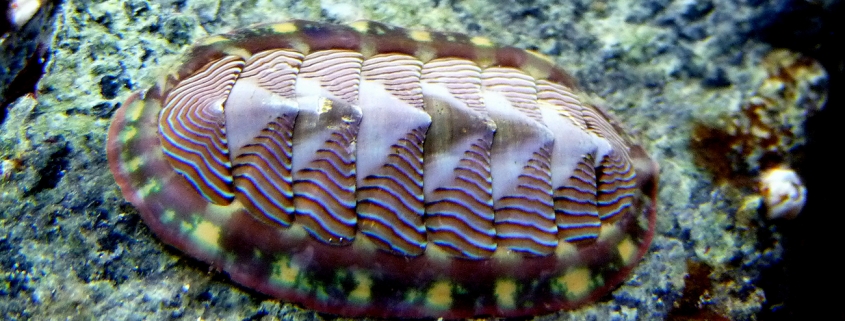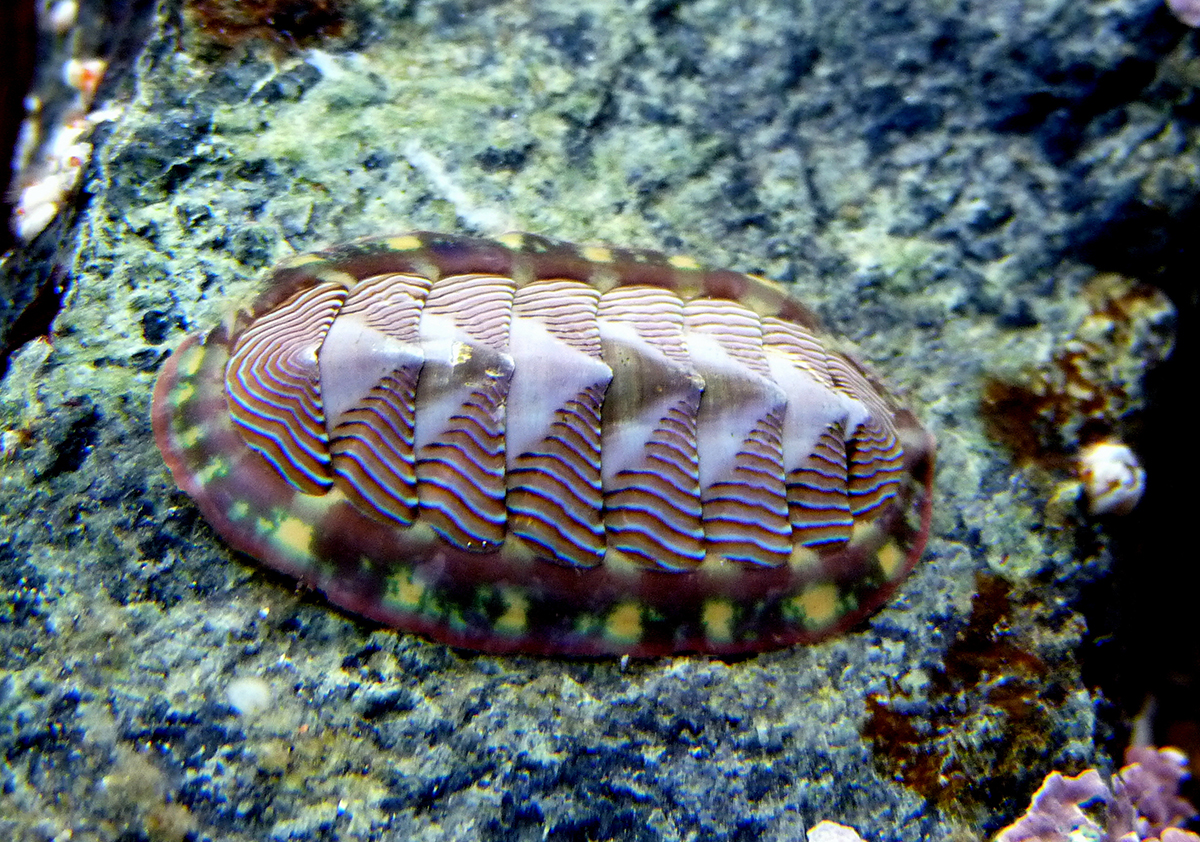Scientific name: Tonicella lineata
Author: Bowie Connor
Length: to 2″ (5cm)
Phylum: Mollusca
Class: Polyplacophora
Where are they found? Lined chitons can be found from Southern Alaska all the way down to the Channel Islands of California, in the rocky intertidal zone. They’ve also been found in the seas of northern Japan, and they can survive in depths of up to 52m.
Natural History Lined chitons have lived for up to 500 million years! They have 8 solid plates made of calcium carbonate, providing protection from above, but also flexible enough that they can roll into a ball when threatened. On the underside of their body, they have one large muscular foot surrounded by the mantle cavity. The foot moves along rocks helped by mucus secreted by the chiton. The mantle cavity contains gills (ctenidia) around the outside of the foot that help them breathe underwater, and also the gonopore, a reproductive pore. At the front of the foot they have a mouth that sucks up algae and nutrients as it moves along the substrate. Like most molluscs, the lined chiton has a unique radula that helps with processing food, almost like if our tongues were lined with rows of hundreds of sharp teeth! Chitons need to have super hard teeth to chew up the algae from hard rocks. Their radular teeth are made of a rare iron that is said to be one of the strongest materials in the world. After, food is broken down further in the stomach and then continues through the intestine and to the anus, which is on the opposite end of a chiton’s mouth.
Predators A few types of sea stars, river otters, and even ducks will eat lined chitons.
Life cycle In the spring, males will release their sperm into the water and the females will release eggs. After the eggs are fertilized, the zygote will develop into a planktonic trochophore larva which will mature into a planktonic stage that will settle onto the sea floor. If the larvae cannot find algae the development will stop, but if they do they will grow into juveniles by secreting the formula for their shells and continuing to eat the algae.
Photograph: D. Young
References
Clark, R. (n.d.). CHITONS. Biological Science | CSUF. Retrieved January 31, 2023, from http://biology.fullerton.edu/deernisse/pubs/Eernisse_07_chitons_Tidepools.pdf
Fletcher, G. (2001, March 15). Tonicella lineata: the lined chiton. Race Rocks. Retrieved January 31, 2023, from https://racerocks.ca/tonicella-lineata-the-lined-chiton/
Fulton, K., & Wickham, S. (n.d.). Lined chiton • Tonicella lineata. Biodiversity of the Central Coast. Retrieved January 31, 2023, from https://www.centralcoastbiodiversity.org/lined-chiton-bull-tonicella-lineata.html






Leave a Reply
Want to join the discussion?Feel free to contribute!